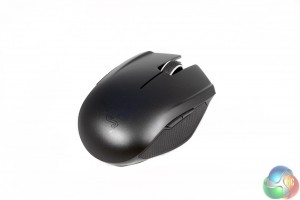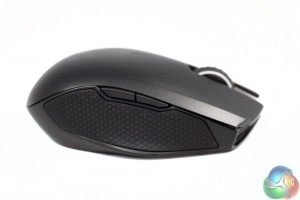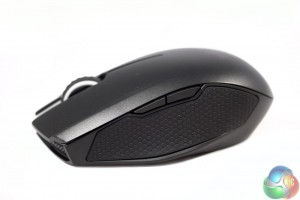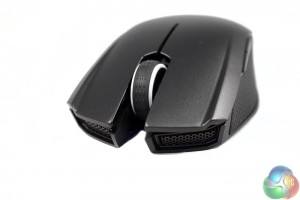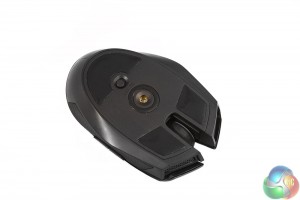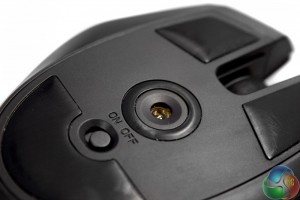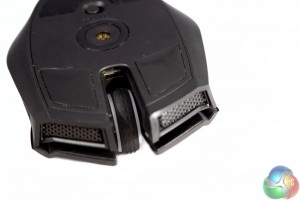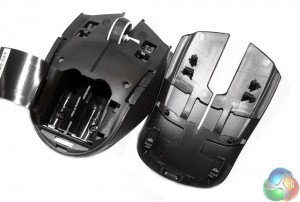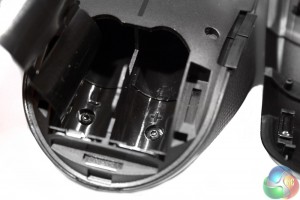The first thing you notice about the Orochi is its size. At around four inches long and two and a half inches wide, the Razer Orochi is a much smaller mouse than most. However it has a good build quality, with no flex if you pressure it and a slick looking design.
It is mostly black plastic, with a single piece for the top section and separate segments for the sides where there is some rubber for added grip.
The sides of the Orochi are identical, making this a truly ambidextrous mouse. With some remaps you could easily use this if you are a left handed gamer. Each side has a long rubber thumb/finger grip, which means it does not really matter where you rest your digits – there will always be rubber there.
There is also a pair of side buttons on each side, which are remappable in the back-end software.
At the front end are the usual pair of left/right click buttons, and a rubber coated scroll wheel, edged by the only two light-strips on this mouse. There is also a pair of grills along the front, though that seems likely to be for styling only.
The underside of the Razer Orochi features a central laser sensor and a trio of PTFE feet to keep it nice and slick when moving around.
One other point of note on the underside, is that you can see the USB port hidden away behind the scroll wheel.
To get this mouse working wirelessly though, you do need to put the batteries in. To achieve that, you pop the top frame off which just clips back on afterwards without issue. Inside you find a pair of battery cavities which can be filled easily.
 KitGuru KitGuru.net – Tech News | Hardware News | Hardware Reviews | IOS | Mobile | Gaming | Graphics Cards
KitGuru KitGuru.net – Tech News | Hardware News | Hardware Reviews | IOS | Mobile | Gaming | Graphics Cards


